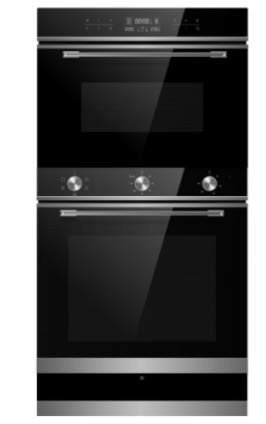The Complete Guide to Ovens and Hobs: Choosing the Right Appliances for Your Kitchen
When it concerns producing cooking work of arts, the significance of quality kitchen appliances can not be overstated. Ovens and hobs are the heart of any kitchen, allowing home cooks and expert chefs alike to create, bake, and sauté tasty meals. Comprehending the various kinds of ovens and hobs, together with their features and functionalities, is vital for making informed acquiring choices. This article provides an in-depth take a look at ovens and hobs, helping you navigate the choices offered so that you can improve your kitchen's performance and versatility.
Comprehending Ovens
Ovens are vital for cooking and baking and can be found in different types to satisfy diverse cooking requirements. Here is an overview of the most common types of ovens:
1. Conventional Ovens
Conventional ovens work by heating the air inside with gas or electric aspects. They are ideal for baking cakes, roasting meats, and cooking casseroles.
2. Convection Ovens
These ovens utilize a fan to distribute hot air, offering an even temperature level throughout, which can considerably decrease cooking times. look at these guys are ideal for baking cookies or roasting vegetables.
3. Microwave Ovens
Microwaves cook food quickly using electromagnetic radiation. They are perfect for reheating leftovers or thawing frozen foods however are not ideal for browning or crisping.
4. Wall Ovens
Including a wall oven into your kitchen style can conserve area and develop a streamlined aesthetic. They operate much like conventional or convection ovens but are built into the wall for simple gain access to.
5. Range Ovens
These ovens combine stovetop burners with an oven, supplying flexibility for those who prefer a single device for all cooking needs.
| Type | Cooking Method | Best For |
|---|---|---|
| Conventional | Electric/Gas | Baking, roasting |
| Convection | Air blood circulation | Quick cooking, even baking |
| Microwave | Electromagnetic | Reheating, defrosting |
| Wall Ovens | Electric/Gas | Space-saving, sleek design |
| Variety Ovens | Electric/Gas | Flexible cooking |
Checking out Hobs
Hobs, also known as cooktops or stovetops, offer the surface to prepare pans straight over a heat source. Like ovens, hobs can be found in different types, which can be categorized as follows:
1. Gas Hobs
These hobs utilize a flame for cooking and provide instant heat control. They are favored by numerous chefs for their responsiveness and accuracy.
2. Electric Hobs
Electric hobs use coils or flat surfaces to heat pans. They provide a constant heat source, but they may take longer to cool down compared to gas hobs.
3. Induction Hobs
Induction hobs use electromagnetic energy to heat pots and pans straight, making them extremely effective and quicker to cook. They are likewise simpler to clean up as the surface area remains relatively cool.
4. Solid Plate Hobs
These are older technology that uses solid metal plates to provide heat. They are long lasting however are less efficient than modern choices.
| Type | Heat Source | Advantages | Drawbacks |
|---|---|---|---|
| Gas Hobs | Flame | Immediate heat control | Requires gas connection |
| Electric Hobs | Electric coils | Constant heat | Slower to cool down |
| Induction Hobs | Electro-magnetic | Quick cooking, energy-efficient | Needs compatible cookware |
| Solid Plate Hobs | Solid metal plate | Sturdiness | Less effective |
Picking the Right Appliances
Selecting the best oven and hob for your kitchen involves considering various factors:
1. Area and Layout
Procedure your kitchen location to figure out the size and placement of the oven and hob. Ensure there is sufficient ventilation, especially for gas devices.
2. Cooking Style
Think about how frequently you prepare and the type of meals you prepare. A stove may suit passionate bakers, while somebody who often stir-fries may choose an induction hob.
3. Energy Source
Choose the energy source that best fits your lifestyle. Gas provides instant control, while electric and induction hobs provide ease of use and are typically more energy-efficient.
4. Budget
Identify your budget plan for kitchen devices. Ovens and hobs vary significantly in rate, depending upon features and brand names. Prioritize important functions that fulfill your requirements.
5. Functions
Look for functionalities such as self-cleaning alternatives, clever innovation compatibility, specific rack configurations for ovens, and safety functions for hobs.
Frequently Asked Questions (FAQs)
Q1: What is the distinction in between a traditional oven and a convection oven?A1: Conventional ovens heat up the air inside without fans, while convection ovens use a fan to circulate hot air for more even cooking. Q2: Can I utilize aluminum cookware on induction hobs?A2: No, induction hobs need ferrous (magnetic )materials like cast iron or stainless-steel to work effectively. Q3: Do gas hobs heat much faster than electric hobs?A3: Yes, gas hobs offer immediate heat, making them quicker for cooking compared to electric hobs. Q4: Is it safe to utilize a microwave oven?A4: Yes, when used according to the maker's instructions, microwave ovens are thought about safe for cooking.
Q5: How typically must I clean my oven and hob?A5: For ideal efficiency, tidy your oven routinely, especially after spills. Hobs should be cleaned down after each usage
to avoid buildup. Ovens and hobs
are indispensable components of a fully equipped kitchen. Understanding the various types, their performances, and the considerations involved in buying
them can dramatically boost cooking experiences. Whether one is a casual home cook or an expert chef, investing time in selecting the right devices can cause cooking success and fulfillment in the kitchen. By focusing on functions that line up with your cooking design, energy sources that fit your home, and budget plan considerations, you can create an efficient work area that inspires culinary creativity.
